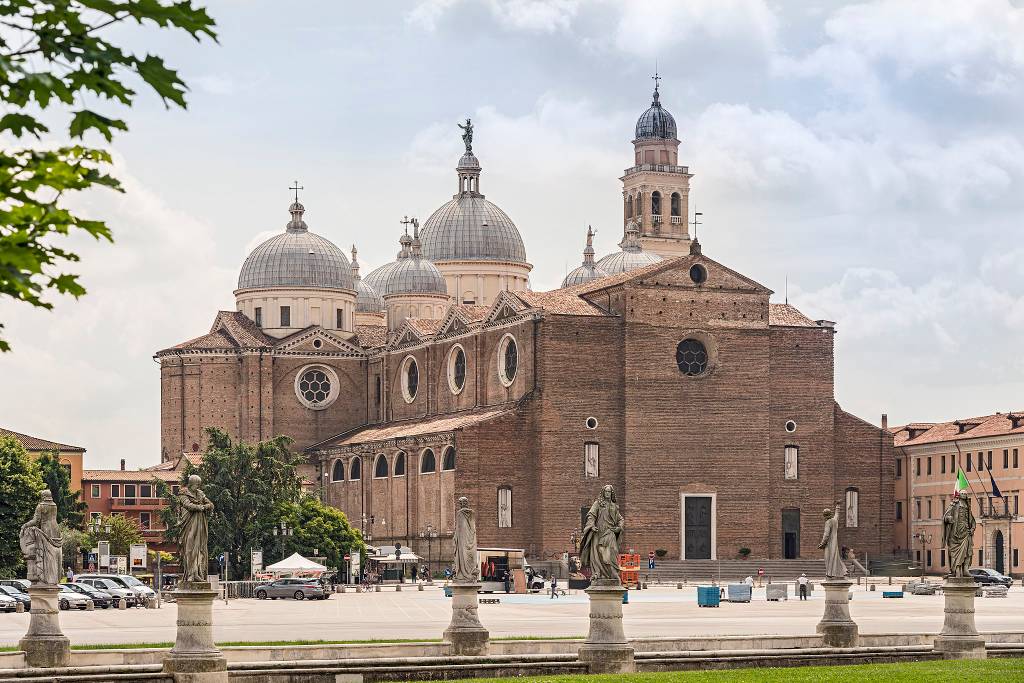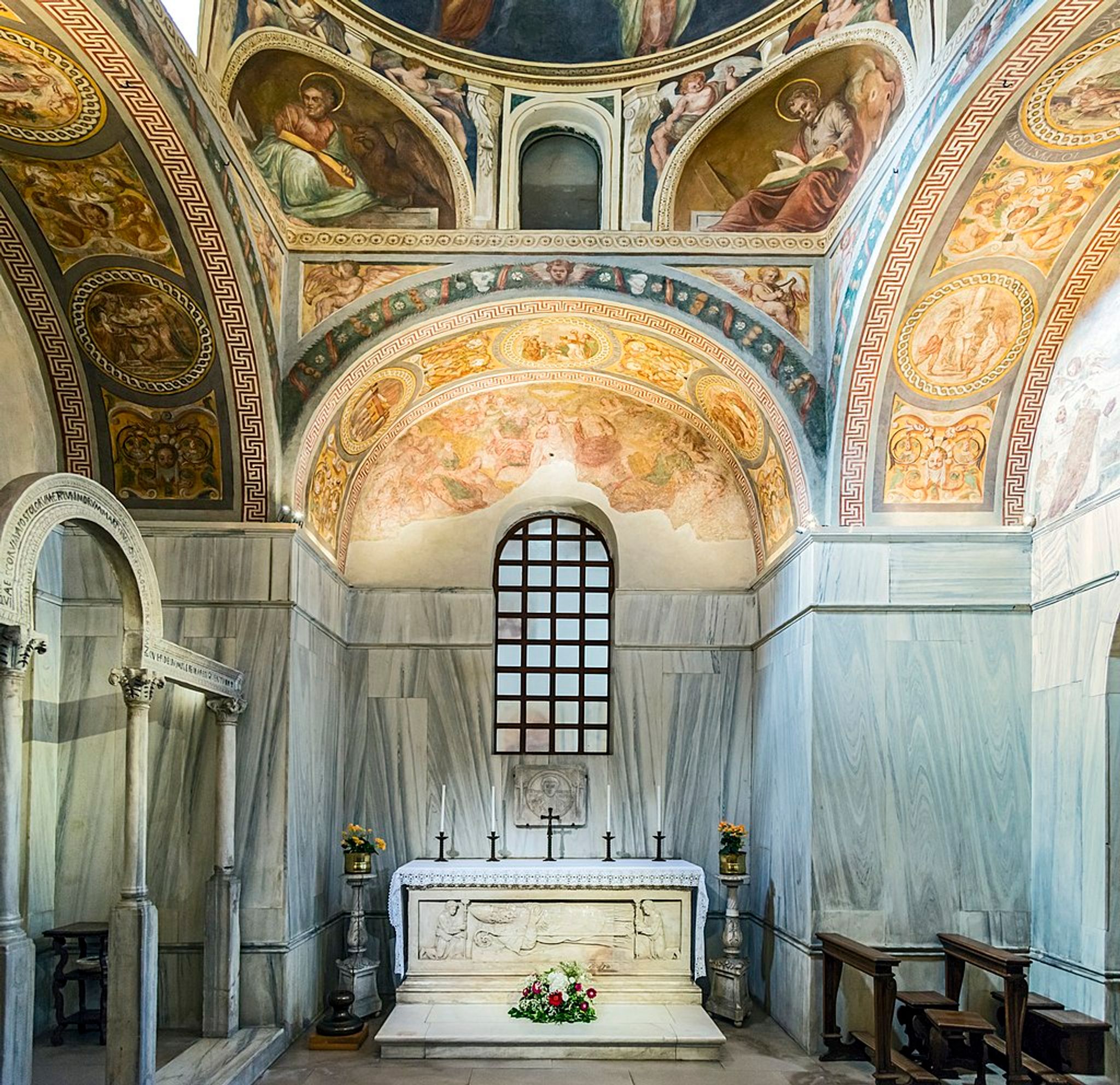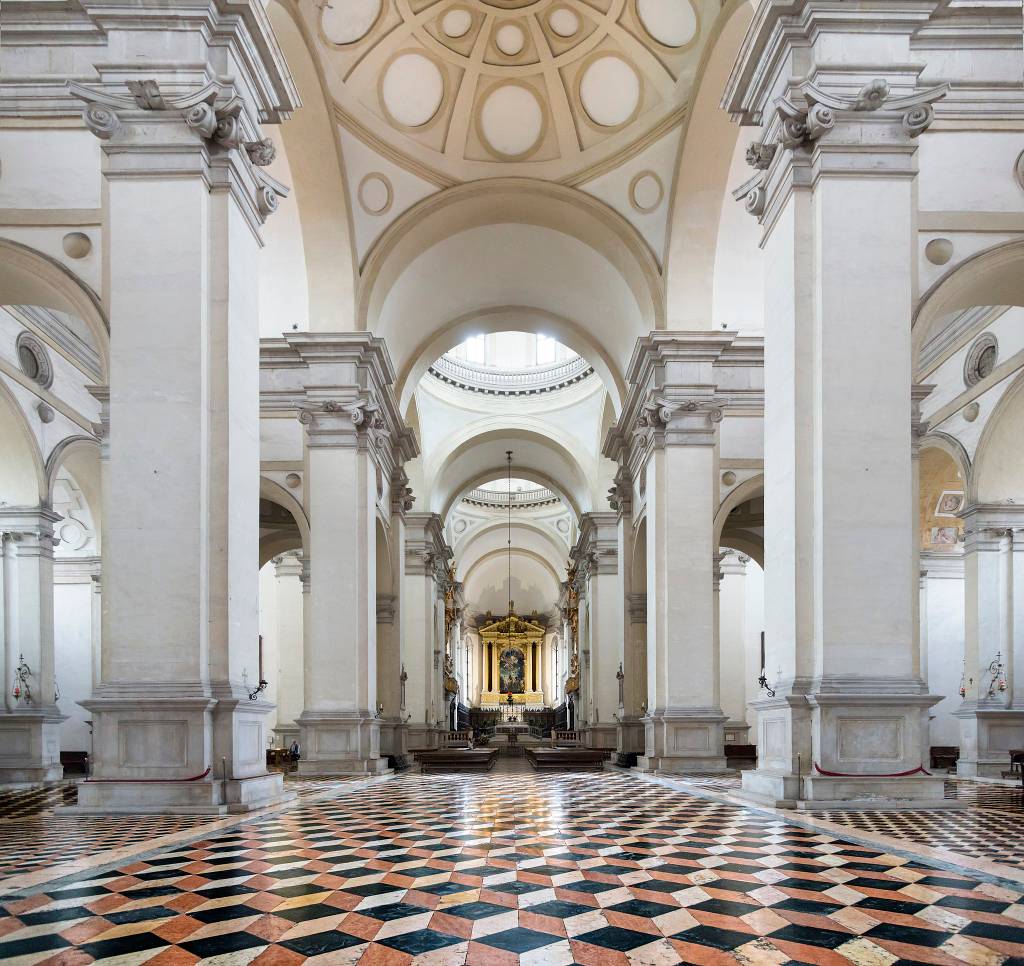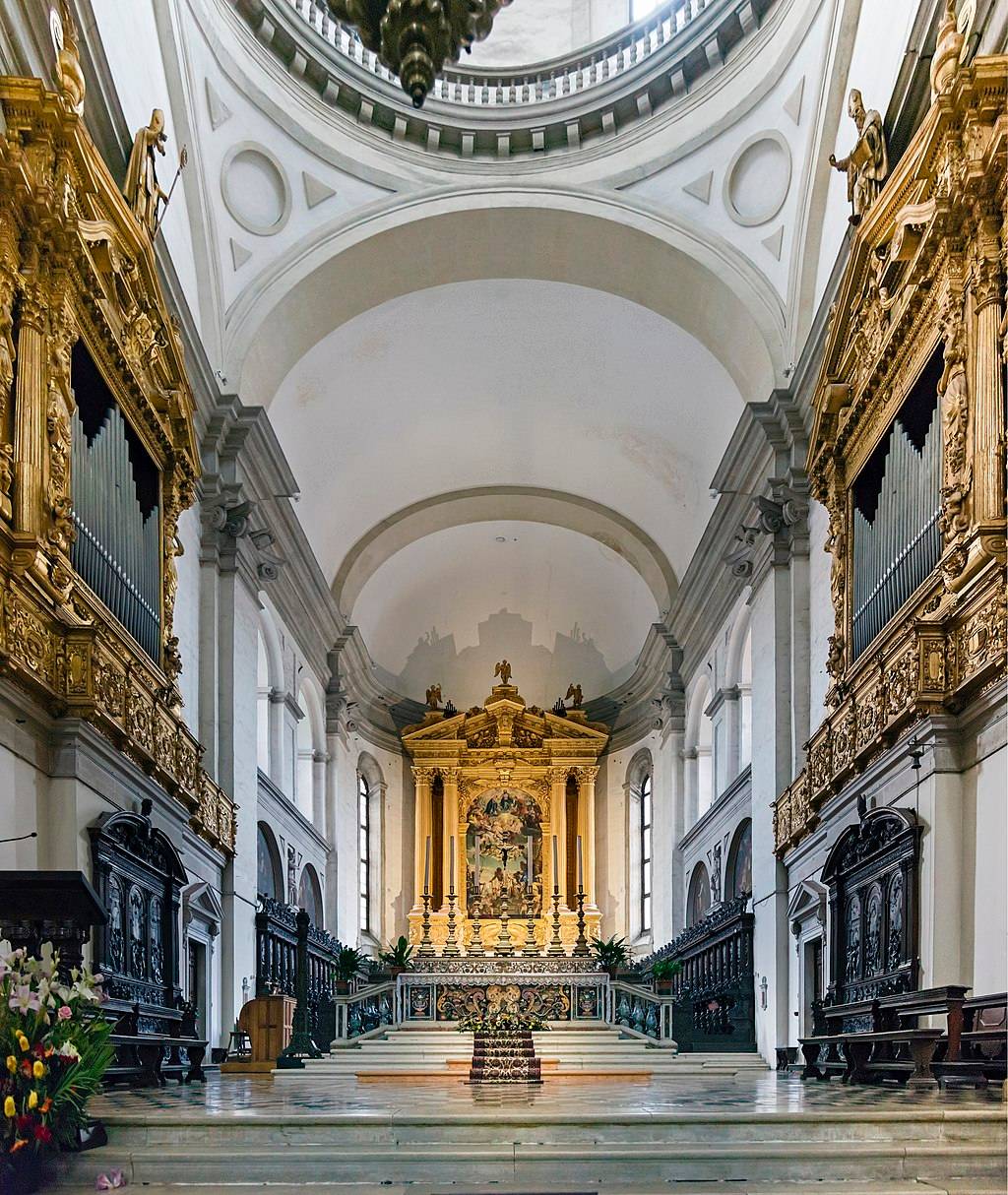Basilica of Santa Giustina
The Paduan Basilica is one of the largest churches in the Christian world and one of the greatest masterpieces of Renaissance architecture.

Overlooking the ample open space of the Prato della Valle square is the Basilica of Santa Giustina, dedicated to the first martyr of the city and one of the patron saints of Padua.
Justina of Padua was born into a distinguished Paduan family during the period of Diocletian's Christian persecutions. She was sentenced to death in 304 because she was a Christian by the Roman Emperor Maximian, who was then passing through Padua. Her body was buried near the Roman theatre Zairo (today’s Prato della Valle), the burial grounds of the pagan aristocracy and a Christian cemetery in the heyday of Roman Patavium.
Shortly after the Edict of Milan in 313, which decriminalised Christianity in the Roman Empire, the Paduans dedicated a church to her, built on the site of her tomb. It was later rebuilt in the fifth century by the praetorian prefect and patrician Venantius Opilio, a basilica of refined proportions flanked by an oratory dedicated to Saint Prosdocimus, the first Bishop of Padua.
In 1117 the earthquake that shook all of northern Italy collapsed the Basilica of Opilio. Only the Sacellum of Saint Mary remained intact, which can still be admired today. It was hastily rebuilt in the following years, incorporating and reusing what remained of the previous construction. It continued to be a construction site in the next centuries which ended only in the 17th century.
The enormous bell towers, enchanting design and architectural perfection have bestowed the grandiose Byzantine Basilica a status of a national monument.
Interior
The elaborate church is designed in the shape of a Latin cross, and at 118.5 metres long and 82 metres wide, the Basilica of Santa Giustina is the seventh-largest in the world.
The interior has a graceful appearance with its chessboard style floors and silver-washed pillars. The basilica floor was laid between 1608 and 1615 on geometric design, with yellow and red Verona marble and black touchstone. Many pieces of Greek marble remained from the Basilica Opilionea, mainly visible in the Sacellum or Sanctuary of Saint Mary, where is kept the tomb of Saint Prosdocimus.
Several other tombs are housed in the interior besides the ones of Saint Justine and Saint Prosdocimus, including those of the Evangelist Saint Luke, Saint Maximus, Saint Urius, Saint Felicitas, Saint Julian, as well as relics of the Apostle Saint Matthias and the bodies of many bishops who chose the Basilica as their burial place.
There are twenty chapels, ten on either aisle, each decorated by rich paintings and sculptures of the late Renaissance. In the middle of the nave is a beautiful wooden Crucifix from the 15th century, praiseworthy for its beauty of features and effectiveness of expression.
The bell tower
The bell tower is a superimposed construction. Up to the lowest cornice of the tower is the ancient bell tower from the 12th century. In 1599 the old tower was doubled in height because the size of the new church prevented the city from hearing the bells. The new tower reaches a height of 32 metres.
It supports seven bells. The largest one was cast in the 18th century and weighs two and a half tons. From the bell tower, looking at the Basilica, on the central dome can be admired the copper statue of Saint Justina watching over the city. The statues of Saints Prosdocimus, Benedict, Arnaldo da Limena and Daniel of Padua are on the four smaller domes.
Abbey of Santa Giustina
Adjacent to the Basilica is the 10th century Benedictine Abbey. It was a destination for pilgrimage and a centre of the movement to reform the monastic life in northern Italy during the 15th century. The abbey developed ties with centres of learning across the continent.
The ancient library of the abbey developed thanks to the close relationship with the University of Padua and some of the most outstanding scholars in Europe. In the 15th century, a school of copyists and miniaturists was created under the guidance of Jacopo Zocchi, professor at the University of Padua. The library was also enriched by important collections of rare books and precious codices bequeathed by various patrons of the arts, among which:
Palla Strozzi – Florentine banker and politician who died in 1462 in Padua after being exiled by the Medici family
Marquess Giovanni Poleni – mathematician and antiquarian, professor at the University of Padua until his death in 1761
Count Scipione Boselli – whose heir sold the library to the abbey in 1748.
These various transfers to the Monastery have given access to a book patrimony of about 80,000 volumes.
In 1797, the fall of the Venetian Republic marked the end of so much work carried out over many centuries: the assets of the Monastery and the most precious manuscripts and editions of the Library were sent to Paris, while the Church and the Monastery were stripped of fine furnishings and works of art. The monks were expelled and the buildings and property were sold off in 1810 under the Napoleonic decrees. The cloisters were then used as a military hospital, later as barracks. In the First World War, it served as a warehouse military and dormitory to the troops.
The buildings were returned to the Catholic Church in 1917 and Pope Benedict XV re-established the Abbey of Santa Giustina with all its ancient rights and privileges. After being placed temporarily under the administration of the Abbot of nearby Abbey of Praglia, in 1943 was elected the new Abbot after 123 years of interruption.
We welcome all contributions, no matter how small. Even a spelling correction is greatly appreciated.
All submissions are reviewed before being published.
Continue to changelog-

© 'Interior view' by Didier Descouens is licensed under CC BY-SA 4.0 Attribution copied to clipboard Failed copying attribution to clipboard -

© 'Choir and High Altar' by Didier Descouens is licensed under CC BY-SA 4.0 Attribution copied to clipboard Failed copying attribution to clipboard -

© 'The sanctuary of Prosdocimus' by Didier Descouens is licensed under CC BY-SA 4.0 Attribution copied to clipboard Failed copying attribution to clipboard -

We welcome all contributions.
All submissions are reviewed before being published.
We welcome all contributions, no matter how small. Even a spelling correction is greatly appreciated.
All submissions are reviewed before being published.
Continue to changelogWe welcome all contributions, no matter how small. Even a spelling correction is greatly appreciated.
All submissions are reviewed before being published.
Continue to changelogWe welcome all contributions, no matter how small. Even a spelling correction is greatly appreciated.
All submissions are reviewed before being published.
Continue to changelogCategory
Cost
-
The oldest Heritage Garden in the world, home to over 6,000 different plant specimens and the futuristic Garden of Biodiversity
-
452 m
Prato della Valle in Padua is one of the most spectacular squares in the world and, with its 90,000 square meters, is one of the largest in Europe.
-
534 m
An aristocratic family mausoleum decorated by Altichiero da Zevio with frescoes depicting scenes from the Life of Christ and of Saint George
-
Once the humble dwelling of Saint Anthony, the Friary developed over the centuries into the five splendid cloisters located on the southern side of the Basilica.
-
One of the most famous and visited sanctuaries in the world and a testament of art decorated by Giotto, Giusto de' Menabuoi, Altichiero da Zevio, and Jacopo Avanzi




